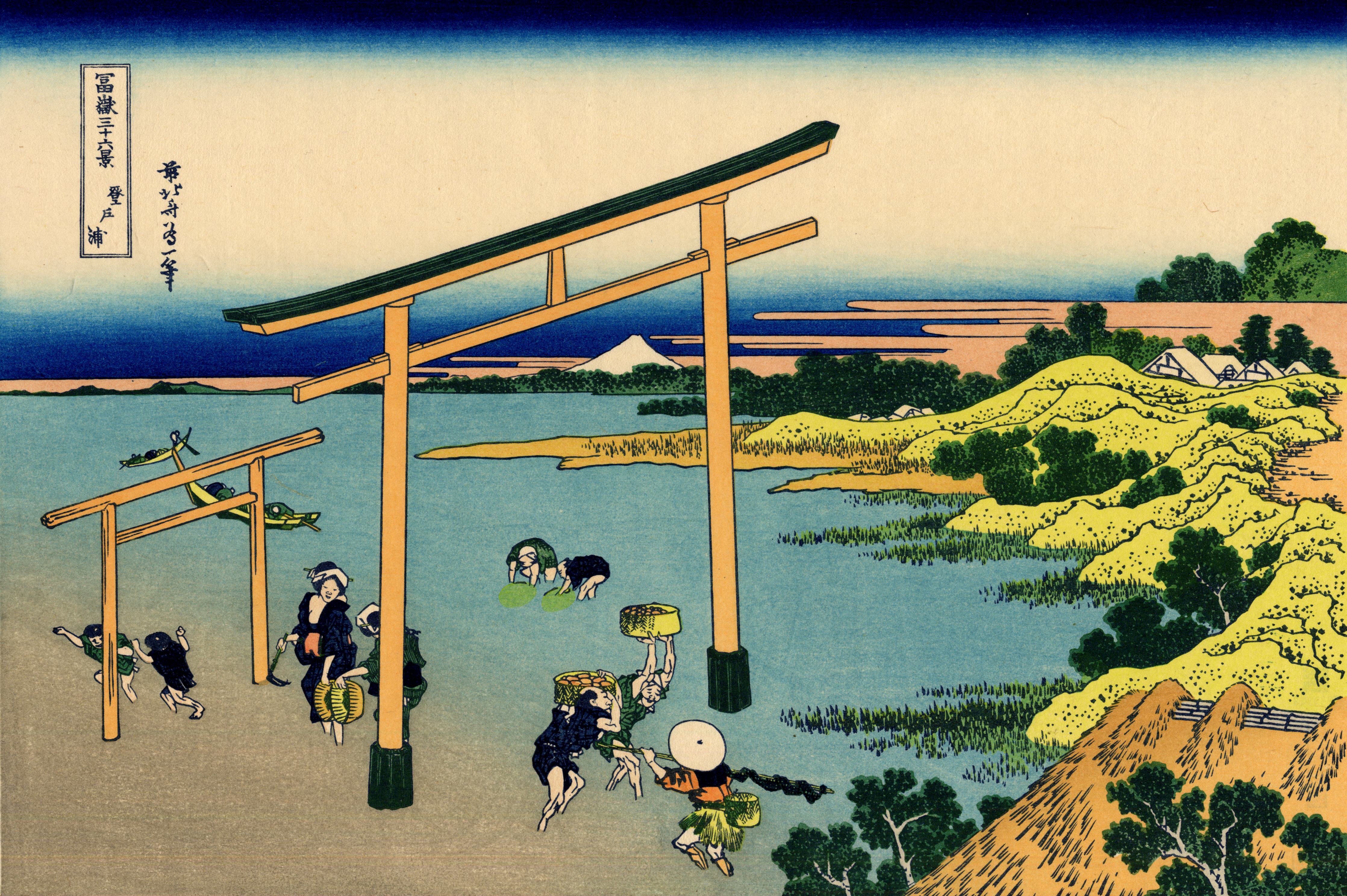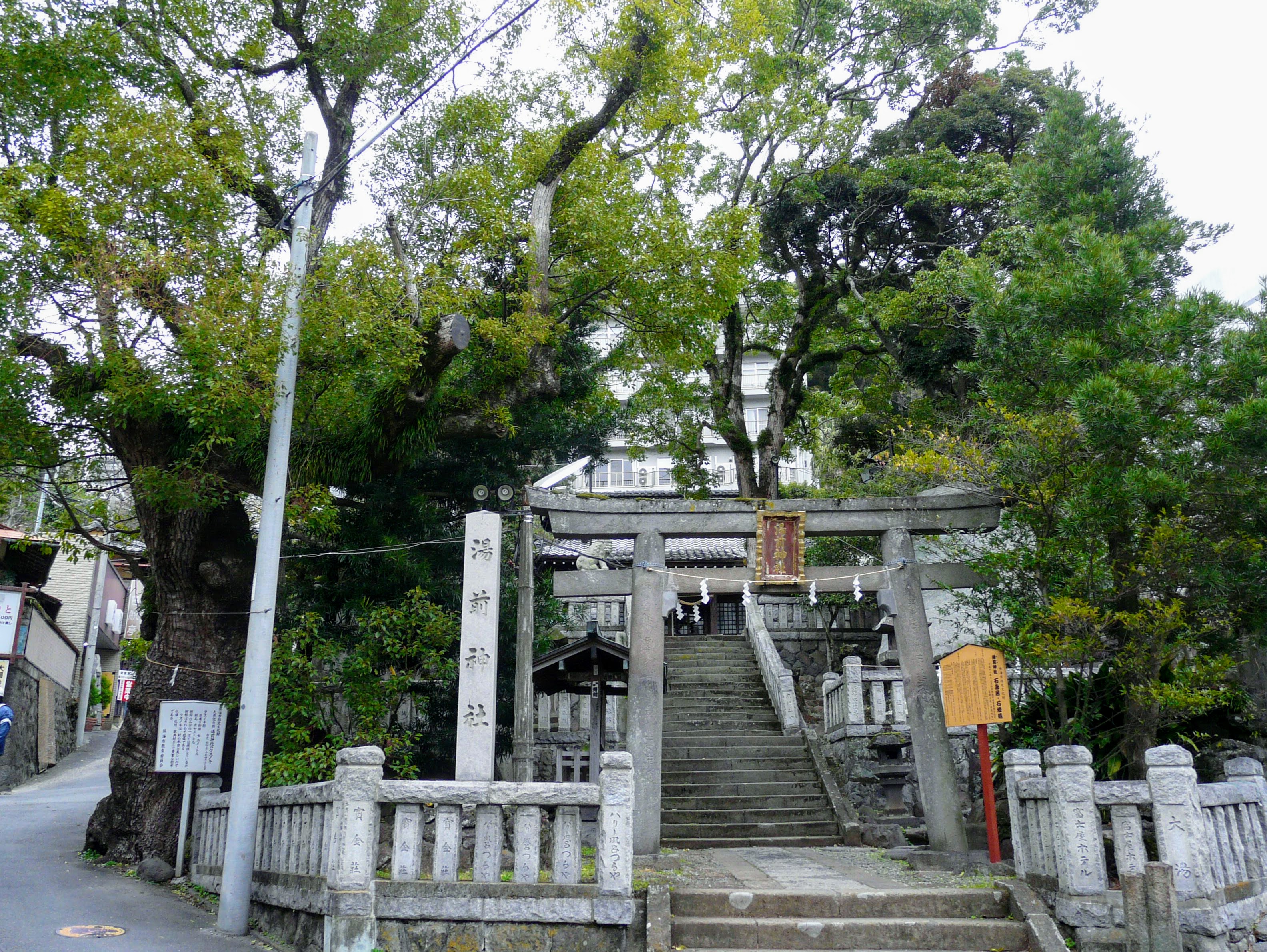|
Takamimusubi
Takamimusubi (高御産巣日, lit. "High Generative Force") is a Creator deity, creation deity in Japanese mythology, who was the second of the Kotoamatsukami, first beings to come into existence. It is speculated that Takamimusubi was originally the tutelary deity for the Imperial House of Japan, Japanese imperial family. According to the Kojiki, Takamimusubi was a hitorigami. Mythology According to ''Kojiki'', when the Japanese creation myth, heaven and earth were created, Ame-no-Minakanushi was the first one to appear in Takamagahara, Takamimusubi the second, and Kamimusubi the third. Together with Amaterasu, he jointly rules the Takamagahara. One myth tells of a bird named Nakime who was sent down to earth to check in on Ame-no-wakahiko, Amewakahiko. Amewakahiko shot the bird with his bow. The arrow pierced through the bird, but the arrow flew all the way to heaven. Takamimusubi saw the arrow and threw it back at the earth where it hit Amewakahiko while he was lying in ... [...More Info...] [...Related Items...] OR: [Wikipedia] [Google] [Baidu] |
Ame-no-Minakanushi
Ame-no-Minakanushi (天之御中主, lit. "Heavenly Ancestral God of the Originating Heart of the Universe") is a deity (''kami'') in Japanese mythology, portrayed in the ''Kojiki'' and the ''Nihon Shoki'' as the first or one of the first deities who manifested when heaven and Earth came into existence. Name The ''kami'' is given the name 'Ame-no-Minakanushi-no-Kami' (天之御中主神; Old Japanese: ''Ame 2-no2-Mi1nakanusi'') in the ''Kojiki'' (ca. 712 CE). The same deity is referred to as 'Ame-no-Minakanushi-no-Mikoto' (天御中主尊) in a variant account cited in the ''Nihon Shoki'' (720 CE). Mythology The ''Kojiki'' portrays Ame-no-Minakanushi as the first god to appear in the heavenly realm of Takamagahara after the emergence of heaven and Earth from the primeval chaos: Unlike later generations of ''kami'', the first seven gods were "single" or "solitary" in that they came into being one by one, without any counterparts, and are described as hiding their presence upo ... [...More Info...] [...Related Items...] OR: [Wikipedia] [Google] [Baidu] |
Kamimusubi
Kamimusubi (神産巣日, lit. "Spirit Generative Force"), also known as Kamimusuhi among other variants, is a ''kami'' and god of creation in Japanese mythology. They are a '' hitorigami,'' and the third of the first three ''kami'' to come into existence ('' Kotoamatsukami''), alongside Ame-no-Minakanushi and Takamimusubi, forming a trio at the beginning of all creation. The name is composed of kami, denoting deity, and musubi, meaning "effecting force of creation". Mythology At the time of the creation of heaven and earth, Kamimusubi was in Takamagahara next to Ame-no-Minakanushi and Takamimusubi. In , Kamimusubi is an ancestral god who sits in Takamagahara and assists the gods of Izumo, and is called "Mi-Oya" (honorfic name for ancestor) by other gods. Kamimusubi became the ancestral god of the five grains (progenitors) after Kamimusubi transformed the grains produced from the body of Ōgetsu-hime, the goddess of food, who was killed by Susanoo, th ... [...More Info...] [...Related Items...] OR: [Wikipedia] [Google] [Baidu] |
Amaterasu
, often called Amaterasu () for short, also known as and , is the goddess of the sun in Japanese mythology. Often considered the chief deity (''kami'') of the Shinto pantheon, she is also portrayed in Japan's earliest literary texts, the () and the (720 CE), as the ruler (or one of the rulers) of the heavenly realm Takamagahara and as the mythical ancestress of the Imperial House of Japan via her grandson Ninigi. Along with two of her siblings (the moon deity Tsukuyomi and the impetuous storm-god Susanoo) she ranks as one of the "Three Precious Children" (, ), the three most important offspring of the creator god Izanagi. Amaterasu's chief place of worship, the Grand Shrine of Ise in Ise, Mie Prefecture, is one of Shinto's holiest sites and a major pilgrimage center and tourist spot. As with other Shinto ''kami'', she is also enshrined in a number of Shinto shrines throughout Japan. Name The goddess is referred to as ''Amaterasu Ōmikami'' ( / ; historical orthogr ... [...More Info...] [...Related Items...] OR: [Wikipedia] [Google] [Baidu] |
Kotoamatsukami
In Shinto, is the collective name for the first gods which came into existence at the time of the creation of the universe. They were born in Takamagahara, the world of Heaven at the time of the creation. Unlike the later gods, these deities were born without any procreation. The three deities that first appeared were: * - Central Master * - High Creator * - Divine Creator A bit later, two more deities came into existence: *Umashiashikabihikoji Japanese Wiki (Corpus). - Energy * (天之常立神) Japanese Wiki (Corpus). - Heaven The next generation of gods that followed was the [...More Info...] [...Related Items...] OR: [Wikipedia] [Google] [Baidu] |
Futodama
Futodama () or Futotama is a god in Japanese mythology, claimed to be the ancestor of Inbe clan, whose characteristics are believed to reflect the functions of the clan as court ritualists. Name and etymology The god is known as Ame-no-Futodama-no-Mikoto () or Futodama (, ) for short. His name is speculated to mean great gift or offering. Myths After Susanoo-no-Mikoto, Susanoo accidentally killed one of Amaterasu, Amaterasu's attendants in her weaving hall, she got upset and locked herself in Ama-no-Iwato, causing the world to plunge into darkness. After almost a year of chaos, Omoikane (Shinto), Omoikane and the other gods came up with a plan to get her out. Futodama and Ame-no-Koyane were tasked with performing a divination. After Amaterasu left the cave, Futodama used a shimenawa to prevent her from going back to the cave again. This story is said to be the mythical origin of shimenawa. In the ''Kogo Shūi'', Futodama is placed as the leader of the performed rituals. Fami ... [...More Info...] [...Related Items...] OR: [Wikipedia] [Google] [Baidu] |
Towatari Shrine
Towatari Shrine (登渡神社, ''Towatari-jinja''), also known as Nobuto Shrine (登戸神社, ''Nobuto-jinja''), is a Shinto shrine located in Nobuto, Chūō-ku, Chiba City, Chiba Prefecture, Japan. Originally a branch temple of Kongojū-ji, a temple to the Buddhist deity Myōken founded by the Chiba clan (modern Chiba Shrine), it was converted into a Shinto shrine during the mid-19th century. Deities The shrine is dedicated to the three deities of creation (造化三神, ''zōka sanshin'') of classical Japanese mythology: Ame-no-Minakanushi, Takamimusubi, and Kamimusubi. Enshrined together with them is Ame-no-Hiwashi, originally the deity of a nearby shrine that was merged into Nobuto Shrine in 1908 ( Meiji 41). History The shrine was originally founded in 1644 (Shōhō 1) by Chiba Sadatane, 33rd head of the Chiba clan, as a Buddhist temple named Hakujasan Shinkō-in Jōin-ji (白蛇山真光院定胤寺). It was a branch temple or ''matsuji'' (末寺) of Kongojū-ji (also ... [...More Info...] [...Related Items...] OR: [Wikipedia] [Google] [Baidu] |
Ame-no-wakahiko
Ame no Wakahiko (天稚彦 or 天若日子) is a god of grains and ''Amatsukami'' in Japanese mythology. He is the son of Amatsukunitama. The ', one of the ''Otogi-zōshi'', is a ''monogatari'' about him. Name The name Ame no Wakahiko means "a young boy in Takamagahara, heaven," and he is thought to be an exceptionally handsome youth. Mythology Sent to earth In many versions, when Ame no Hohi did not send word for three years, all the gods gathered up, and Ame no Wakahiko was the one who was chosen to rule the earth. In many versions Ame no Wakahiko was given a bow. In some versions, however, Ame no Wakahiko is the son of Ame no Hohi and Ame no Wakahiko was sent to earth to look for him. Death In some versions, Ame no Wakahiko fell in love with . Eight years later, after receiving no report back, the gods sent a bird named Nakime down to earth to check in on him. Following the advice of a wise woman, Ame no Wakahiko used his bow to shoot the bird. The bird was killed but ... [...More Info...] [...Related Items...] OR: [Wikipedia] [Google] [Baidu] |
Takuhadachiji-hime
, is a deity that appears in the creation story of the "Kojiki" and "Nihon Shoki." She is the daughter of the god Takamimusubi and younger sister of Omoikane.https://archive.today/20230406174104/https://d-museum.kokugakuin.ac.jp/eos/detail/?id=9716 She is the goddess of textiles and mother of Ninigi-no-Mikoto is a deity in Japanese mythology. (-no-Mikoto here is an honorific title applied to the names of Japanese gods; Ninigi is the specific god's name.) Grandson of the sun goddess Amaterasu, Ninigi is regarded according to Japanese mythology as the ... and Amenohoakari, and thus an ancestor of Jimmu. The meaning of her name is not entirely clear, but "Takuhadachiji-hime" is believed to mean "many woven fabrics" or "many beautiful fabrics." There are also theories that the name refers to the deity as a skilled weaver or that it relates to the island of Toyoakitsu. In the creation story, Takuhadachiji-hime is said to be a part of the pantheon of gods who descended from the ... [...More Info...] [...Related Items...] OR: [Wikipedia] [Google] [Baidu] |
Omoikane (Shinto)
Omoikane (思兼 or 思金) is a Shinto Kami of wisdom and intelligence. His name means "having the wisdom and thoughtfulness of many people". A heavenly deity who is called upon to "ponder" and give good counsel in the deliberations of the heavenly deities. In the myth where Amaterasu hid in a cave, he was entrusted with the task of finding a way to get her out. Carpenters pray to him during the construction of pillars in a building. Usually, Japanese people pray to Omoikane for success in school and exams. He is known by other names as ''Tokoyo-no-Omoikane'' (常世思金神) in the ''Kojiki'' (古事記); ''Omoikane'' (思兼神) in the ''Nihon Shoki'' (日本書紀); ''Omokane'' (思金神, 思兼神), ''Tokoyo-no-Omoikane'' (常世思金神), ''Yagokoro-omoikane'' (八意思兼神, 八意思金神) in the ''Kujiki'' (旧事紀 or ''Sendai Kuji Hongi'' 先代旧事本紀), or ''Achihiko'' (阿智彦). He is the son of creator deity Takamimusubi (高御産巣日神) and the ... [...More Info...] [...Related Items...] OR: [Wikipedia] [Google] [Baidu] |
Sukunabikona
Sukunabikona or Sukuna bikona (少彦名神, also known as Sukuna-biko, Sukuna-biko-na, Sukuna hikona) is the Shinto kami of the ''onsen'' (hot springs), agriculture, healing, magic, brewing sake and knowledge. His name means "the small lord of renown." He is often described as being a dwarf and is frequently paired with Ōkuninushi.Handbook of Japanese Mythology by Michael Ashkenazi, ABC-CLIO, 2003 Adventures with Ōkuninushi One day while Ōkuninushi was at Miho Bay, he saw a small boat on the whitecap waves. The boat was made of a Metaplexis pod. Inside was a small dwarf, no bigger than a thumb. Ōkuninushi picked him up, and Sukuna-biko-na bit him on the cheek. Ōkuninushi asked him his name, but he would not reply. Then a nearby toad said to bring Sukuna-biko-na to Kuebiko the kami of agriculture, as the scarecrow god would know. When Kuebiko saw the dwarf, he said "That is Sukuna son of Kami-Musubi." Kamimusubi is part of the primordial creator trinity with Takamimusubi ... [...More Info...] [...Related Items...] OR: [Wikipedia] [Google] [Baidu] |
Ninigi-no-Mikoto
is a deity in Japanese mythology. (-no-Mikoto here is an honorific title applied to the names of Japanese gods; Ninigi is the specific god's name.) Grandson of the sun goddess Amaterasu, Ninigi is regarded according to Japanese mythology as the great-grandfather of Japan’s first emperor, Emperor Jimmu. The Imperial Regalia of Japan, three sacred treasures brought with Ninigi from Heaven and divine ancestry established the Imperial House of Japan, Japanese Imperial Family. The three generations of ''kami'' starting with Ninigi are sometimes referred to as the three generations of Hyūga, they are said to represent a transitional period between the heavenly ''kami'' and the first emperor. Name and etymology Ninigi-no-Mikoto (瓊瓊杵尊), means "The Great God Ninigi." Another name of his is Ame-nigishi-kuni-nigishi-amatsuhiko-hiko-ho-no-ninigi-no-Mikoto (天邇岐志国邇岐志天津日高日子番能邇邇芸命) or "The Great God Ninigi, of the Imperial State, The Child o ... [...More Info...] [...Related Items...] OR: [Wikipedia] [Google] [Baidu] |




